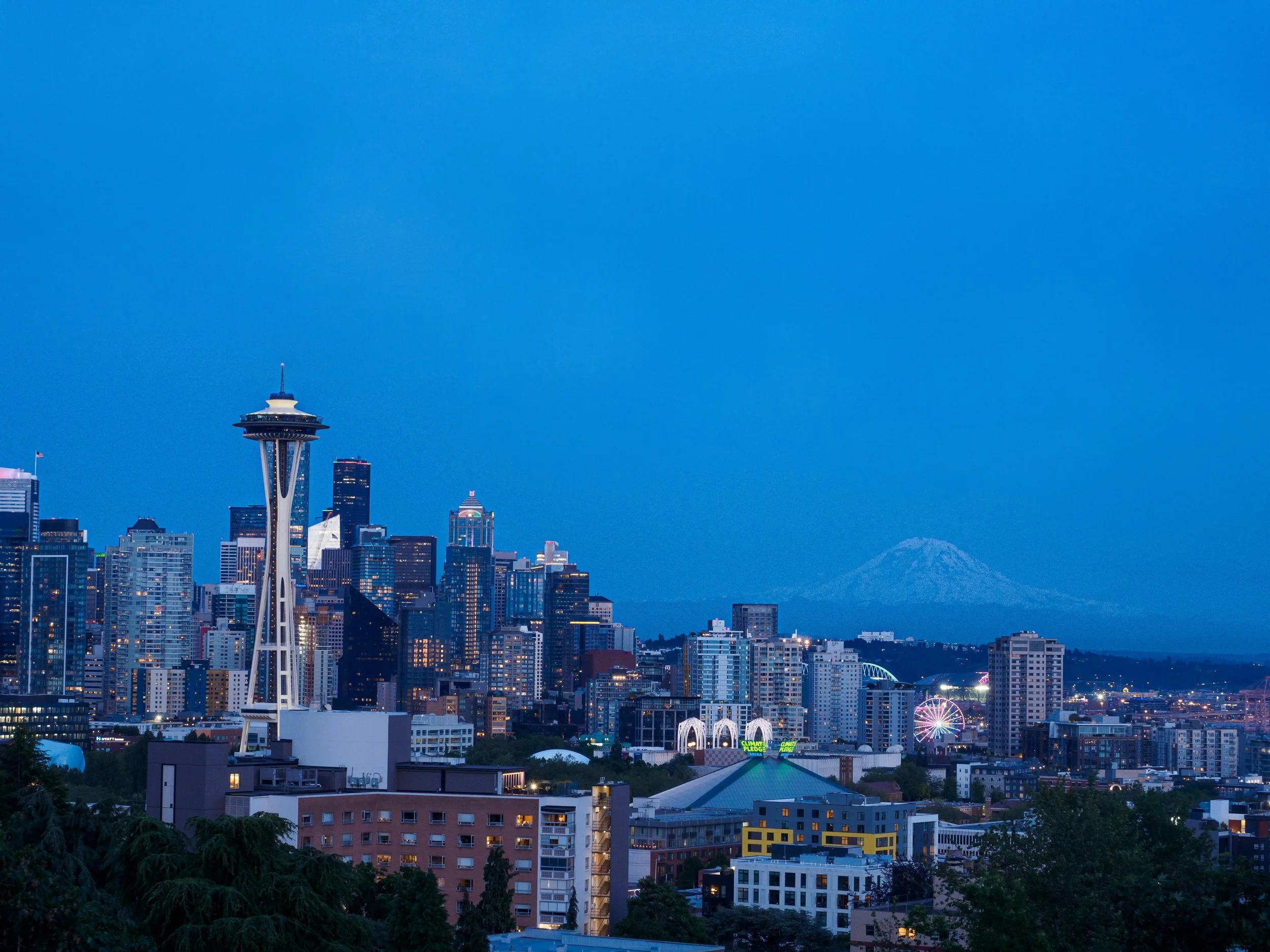WORLD CITIES DAY
OCTOBER 31
World Cities Day: A Global Celebration of Urban Beauty and Resilience
Every year on October 31st, cities around the world come together to celebrate World Cities Day, a global observance that shines a spotlight on the incredible power and potential of our urban spaces. Established by the United Nations in 2013 with the uplifting theme "Better City, Better Life," this special day invites us to pause and appreciate the magnificent tapestry of human achievement that cities represent. From the soaring skyscrapers of New York to the ancient charm of Istanbul, from the innovative green corridors of Singapore to the vibrant neighborhoods of São Paulo, cities are humanity's greatest collaborative art project—constantly evolving masterpieces that blend architecture, culture, innovation, and community spirit.
The Breathtaking Beauty of Urban Landscapes
Cities are living galleries where human creativity meets functional necessity, producing some of the most stunning visual experiences on Earth. Beauty is essential for sustainable cities, as modern science explains how aesthetically pleasing environments create places that can genuinely save the planet while nurturing human well-being. The architectural wonders that define our urban skylines tell stories of human ambition and artistic vision—from the organic, flowing designs of Antoni Gaudí in Barcelona that seem to dance with nature itself, to the bold geometric innovations of Chicago's pioneering skyscrapers that first reached toward the heavens. These urban landscapes don't just serve practical purposes; they inspire, uplift, and create emotional connections that transform mere residents into passionate city lovers.
The cultural elegance of cities creates a symphony of human expression that captivates visitors and residents alike. Venice's intricate network of canals reflects centuries of engineering marvel, while its Gothic and Renaissance architecture creates a dreamlike atmosphere that has enchanted people for generations. Paris combines its iconic boulevards with charming neighborhoods where every corner reveals another architectural gem, and Singapore demonstrates how modern cities can become gardens in the sky, with vertical forests and green corridors that blur the line between nature and urbanity. These beautiful urban environments aren't accidents—they're the result of thoughtful planning, creative vision, and communities that understand that where we live shapes who we become.
Cities as Engines of Human Opportunity and Innovation
Beyond their visual splendor, cities serve as incredible engines of human opportunity, creating pathways to prosperity that simply don't exist anywhere else. The magic of urban agglomeration—bringing people, resources, and ideas together in concentrated spaces—creates a multiplier effect that generates innovation, economic growth, and social mobility. Cities provide access to education, healthcare, cultural experiences, and professional opportunities that can transform individual lives and entire families. Entrepreneurs and small businesses thrive in urban environments because cities offer the critical mass of customers, suppliers, talent, and support services needed to turn creative ideas into successful ventures.
The role of cities as innovation hubs cannot be overstated—they're where breakthrough technologies are developed, where artistic movements are born, and where social progress accelerates. From Silicon Valley's revolutionary tech ecosystem to Berlin's vibrant startup culture, from Tokyo's robotics leadership to New York's financial innovations, cities create the collaborative environments where human ingenuity flourishes. Cities foster innovation, culture and economic growth while serving as key platforms for tackling complex challenges from growing inequalities to healthcare access. The diversity of urban populations brings together different perspectives, skills, and experiences, creating the creative friction that sparks new solutions to old problems.
The Urgent Need for Urban Protection and Sustainability
However, our beloved cities face unprecedented challenges that demand immediate attention and collective action. Cities account for more than 70% of global energy-related CO2 emissions and consume over two-thirds of the world's energy, making them both major contributors to climate change and vulnerable victims of its impacts. Urban heat islands make cities significantly warmer than surrounding areas, air pollution threatens public health, and extreme weather events increasingly disrupt urban infrastructure and community life. The rapid pace of urbanization—with 2.5 billion additional people expected to live in cities by 2050—means these challenges will only intensify without decisive action.
The environmental pressures facing modern cities are staggering: inadequate water supply, overwhelming waste management challenges, loss of green spaces, and the constant struggle to balance economic growth with environmental protection. Cities consume 60% of global energy and generate 70% of both greenhouse gas emissions and waste, despite covering only 2% of the Earth's land surface. Climate change amplifies existing urban vulnerabilities, bringing more frequent flooding, deadly heat waves, and threats to essential infrastructure. Yet within these challenges lies tremendous opportunity—cities are uniquely positioned to implement innovative solutions that can create positive change at scale, from green infrastructure and renewable energy systems to sustainable transportation and circular economy practices.
Empowering Community Action for Urban Resilience
The beautiful truth about protecting and improving our cities is that every single person can make a meaningful difference through thoughtful action and community engagement. Citizen engagement is crucial for successful design and implementation of urban sustainability projects because residents understand local needs, priorities, and solutions better than anyone else. From participating in community gardens and urban forestry projects to advocating for better public transportation and supporting local businesses, individual actions combine to create powerful collective impact.
Practical actions people can take include joining or organizing "Operation Stonebreaker" campaigns that replace unnecessary concrete surfaces with green spaces, participating in urban agriculture initiatives that create food security and community connection, and engaging in citizen science projects that monitor air quality and biodiversity. Community-led data collection can inform and strengthen partnerships between residents and local government for more effective urban planning. Supporting renewable energy initiatives, using public transportation, reducing waste, and participating in local planning meetings are all ways residents can shape their cities' sustainable future.
The power of participatory budgeting and community engagement ensures that urban investments reflect real community needs while building social capital and democratic participation. When citizens feel genuinely heard and valued in decision-making processes, they become active stewards of their urban environment, creating positive feedback loops that strengthen both environmental and social resilience. Local action can include everything from organizing neighborhood clean-up events and tree-planting campaigns to advocating for green building standards and supporting urban wildlife conservation.
Building Tomorrow's Sustainable Cities Together
As we celebrate World Cities Day, we're not just acknowledging what cities are today—we're envisioning what they can become tomorrow with our collective effort and imagination. The battle of global sustainability will be won in our cities, and the choices we make now will determine whether future generations inherit urban environments that are inclusive, resilient, and life-giving. Cities have already proven themselves remarkably agile and innovative partners in addressing global challenges, often setting sustainability targets that exceed those of national governments.
The vision of truly sustainable cities is within our reach: urban areas where green infrastructure provides natural cooling and flood protection, where renewable energy powers clean transportation systems, where waste becomes resources through circular economy principles, and where every neighborhood offers access to parks, healthy food, and economic opportunity. UNESCO believes that for cities to become truly liveable places, we need innovation in all spheres of human activity—social, cultural, educational, and technological innovation that strengthens resilience and builds more cohesive societies. This requires ongoing collaboration between residents, businesses, governments, and civil society organizations, all working together toward the shared goal of cities that serve both people and planet.
World Cities Day reminds us that cities are humanity's greatest experiment in cooperative living, and their success depends on all of us. By combining our appreciation for urban beauty with our commitment to sustainability and community action, we can ensure that October 31st isn't just a day of celebration—it's a catalyst for the year-round work of building better cities and, ultimately, a better world for everyone.
www.worldcitiesday.org
HOW CAN I GET INVOLVED?
Volunteer: Join us in our efforts to promote environmental awareness and sustainability in your community. Whether you have a few hours or a few days to spare, your help is invaluable!
Partner with Us: If you're part of a nonprofit, business, or government organization, consider partnering with the Environmental Alliance for collaborative projects or events. Together, we can make a bigger impact!
Stay Informed: Sign up for our newsletter to receive the latest news, events, and ways to participate in our initiatives.
Attend Events: Participate in our upcoming events and awareness days. Check our calendar for dates and details.
Spread the Word: Share our mission with your network. Follow us on social media and help us raise awareness about environmental issues.

